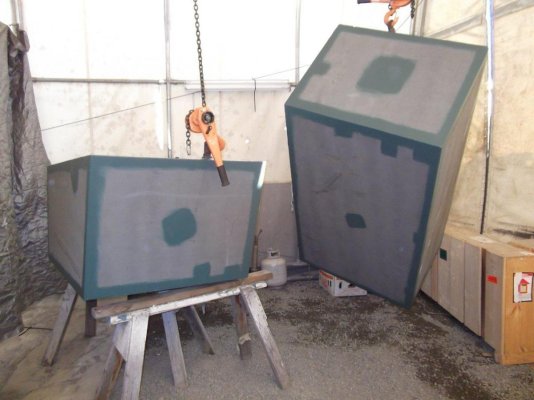I've been looking at older trawlers, and of the ones I could tell, all the boats up through the mid 80's had the black iron fuel tanks.
When did they stop using black iron tanks?
Are fiberglass tanks common?
How do you find out what type of tank is in the boat you're looking at without digging into it? (or is that just part of the fun?)
When did they stop using black iron tanks?
Are fiberglass tanks common?
How do you find out what type of tank is in the boat you're looking at without digging into it? (or is that just part of the fun?)



